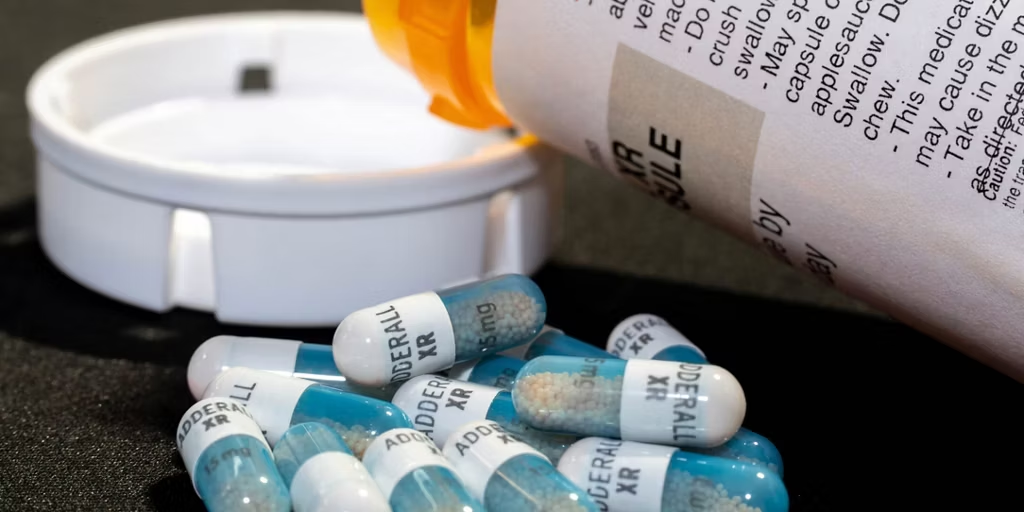What’s the Right ADHD Medication for You? Find Out Now

Attention Deficit Hyperactivity Disorder (ADHD) is a common neurodevelopmental condition affecting millions of children and adults worldwide. Whether you’ve just been diagnosed or are exploring better treatment options, one of the biggest questions you’ll face is: “What’s the right ADHD medication for me?” The answer isn’t always simple, but with the right information and medical guidance, you can make the best choice for your lifestyle and needs.
In this guide, we’ll walk you through the types of ADHD medications, how they work, common side effects, and how to decide what might be best for you or your loved one.
Understanding ADHD and Its Symptoms
ADHD symptoms vary but typically include:
- Inattention (e.g., trouble focusing or staying organized)
- Hyperactivity (e.g., restlessness or fidgeting)
- Impulsivity (e.g., interrupting or acting without thinking)
These symptoms can affect school, work, relationships, and self-esteem. Thankfully, ADHD medications—combined with therapy or lifestyle changes—can significantly reduce symptoms and improve quality of life.
Types of ADHD Medications
ADHD medications fall into two main categories:
1. Stimulant Medications
Stimulants are the most commonly prescribed medications for ADHD. They work by increasing the levels of dopamine and norepinephrine in the brain, helping improve focus, attention span, and impulse control.
Common Stimulant Medications Include:
- Methylphenidate-based: Ritalin, Concerta, Daytrana, Quillivant XR
- Amphetamine-based: Adderall, Vyvanse, Dexedrine, Evekeo
Pros:
- Fast-acting (some within 30 minutes)
- Proven effectiveness
- Widely available in short-acting and long-acting forms
Cons:
- Possible side effects like appetite loss, insomnia, anxiety
- Can increase heart rate or blood pressure
- Risk of misuse if not taken as prescribed
2. Non-Stimulant Medications
For those who don’t respond well to stimulants or prefer alternatives, non-stimulant medications offer another route. These drugs target different neurotransmitters and are generally slower to act but can still be very effective.
Popular Non-Stimulant Options Include:
- Atomoxetine (Strattera): A norepinephrine reuptake inhibitor
- Guanfacine (Intuniv): Originally used for high blood pressure, helps with hyperactivity
- Clonidine (Kapvay): Calms impulsive behaviors and improves sleep
Pros:
- Lower risk of abuse or dependency
- May be better for people with anxiety, tics, or sleep problems
- Long-lasting symptom control
Cons:
- Takes longer to show full effect (often 2–4 weeks)
- Possible drowsiness or low blood pressure
- May be less effective than stimulants for some
Factors to Consider When Choosing ADHD Medication
Not every ADHD medication works the same for everyone. Here are some key things to consider before starting a prescription:
1. Age and Symptoms
Children, teens, and adults may respond differently to certain medications. Some drugs are FDA-approved only for specific age groups.
2. Daily Schedule
Do you need medication to last all day or just during work/school hours? Long-acting versions are better for full-day coverage, while short-acting ones may be fine for part-time focus.
3. Side Effect Tolerance
Some people experience side effects such as appetite suppression or trouble sleeping. If side effects are too uncomfortable, your doctor may switch the medication or lower the dose.
4. Other Health Conditions
If you have anxiety, depression, or heart issues, certain medications may not be ideal. Non-stimulants are often preferred for those with coexisting mental health conditions.
5. Personal or Family History
If there’s a history of substance abuse or addiction, non-stimulants may be safer. Your doctor will consider your background carefully.
6. Cost and Insurance Coverage
Some medications can be expensive without insurance, especially brand-name versions. Generic options are often more affordable and just as effective.
The Process of Finding the Right Medication
Finding the right ADHD medication is often a process of trial and adjustment. It’s important to work closely with your healthcare provider during this period.
Steps to Expect:
- Initial Evaluation: Your doctor will assess your symptoms, history, and goals.
- Medication Trial: A medication will be prescribed at a low dose.
- Monitoring and Feedback: You’ll track effectiveness and any side effects over time.
- Adjustments: Your provider may adjust the dose, switch medications, or recommend combination therapy.
It can take several weeks to find the best match—but once found, many people see life-changing improvements.
Tips for Success with ADHD Medications
To get the most from your ADHD treatment:
- Stick to a routine: Take medications at the same time daily
- Monitor side effects: Keep a journal of how you feel
- Stay in communication: Regular check-ins with your doctor are vital
- Combine with therapy: Cognitive behavioral therapy (CBT) often enhances results
- Don’t stop suddenly: Always consult your doctor before changing doses or stopping
Natural Alternatives and Lifestyle Support
Some people prefer or supplement medication with natural or lifestyle approaches, such as:
- Exercise: Increases dopamine naturally
- Balanced diet: Reduces sugar and processed food intake
- Mindfulness and meditation: Helps with impulsivity and focus
- Behavioral therapy: Offers coping skills and structure
- Adequate sleep: Critical for brain function and attention
While these may not replace medication for everyone, they can significantly enhance overall well-being.
Final Thoughts: Your ADHD Treatment Journey Is Unique
There’s no “one-size-fits-all” solution when it comes to ADHD medication. The right treatment for you will depend on a variety of factors, including age, symptoms, lifestyle, and how your body responds to different drugs. Whether you choose a stimulant, non-stimulant, or a combination of approaches, working closely with a qualified healthcare provider is the key to success.
With the right support and medication plan, many people with ADHD not only manage their symptoms—but thrive in every area of life.



